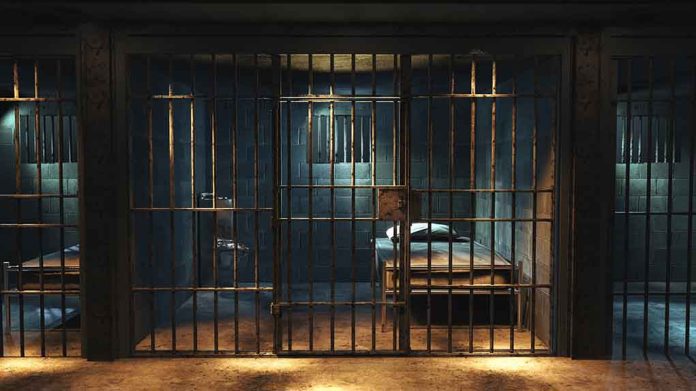
President Trump has ordered the reopening of the infamous Alcatraz prison to combat rising violent crime, transforming the popular tourist destination back into a maximum-security facility for “America’s most ruthless and violent offenders.”
Key Takeaways
- President Trump has directed federal agencies to reopen and expand Alcatraz prison to house dangerous criminals and symbolize his commitment to law and order.
- The historic prison, closed since 1963 and operating as a tourist destination since 1973, would require substantial rebuilding and enlargement.
- Trump’s directive involves collaboration between the Bureau of Prisons, Department of Justice, FBI, and Homeland Security.
- The plan faces criticism from Democrats like Nancy Pelosi, who called it “not a serious” proposal given Alcatraz’s current status as a national park.
- This initiative aligns with Trump’s broader law enforcement strategy, which includes proposals to deport gang members and potentially send American criminals to foreign detention facilities.
Trump Announces Alcatraz Revival on Truth Social
On May 4, President Trump took to his Truth Social platform to announce his directive to reopen the historic Alcatraz prison. In his characteristic bold approach to law enforcement, Trump ordered the Bureau of Prisons, Department of Justice, FBI, and Homeland Security to collaborate on the project. The president’s plan calls for a “substantially enlarged and rebuilt” facility on the island in San Francisco Bay, which has served as a tourist attraction and national park for nearly five decades since its closure as a federal penitentiary in 1963.
“REBUILD, AND OPEN ALCATRAZ! For too long, America has been plagued by vicious, violent, and repeat Criminal Offenders, the dregs of society, who will never contribute anything other than Misery and Suffering,” declared President Donald Trump.
Alcatraz: From Historical Prison to Symbol of Justice
Alcatraz Island, known as “The Rock,” operated as a federal penitentiary from 1934 to 1963, housing notorious criminals including gangster Al Capone. The facility was originally closed due to excessive operational costs, which ran nearly three times higher than other federal prisons. Since 1973, the island has been open to tourists and currently receives approximately 1.7 million visitors annually as part of the Golden Gate National Recreation Area, managed by the National Park Service.
“For too long, America has been plagued by vicious, violent and repeat Criminal Offenders, the dregs of society, who will never contribute anything other than Misery and Suffering. When we were a more serious Nation, in times past, we did not hesitate to lock up the most dangerous criminals, and keep them far away from anyone they could harm. That’s the way it’s supposed to be,” stated Mr. Trump.
Trump’s vision for Alcatraz extends beyond mere incarceration. The president intends for the reopened facility to serve as a powerful symbol of his administration’s commitment to law, order, and justice. This move aligns with his broader tough-on-crime agenda and reinforces his pledge to protect law-abiding Americans from violent offenders who he describes as “the dregs of society.”
Democratic Opposition and Practical Challenges
As with many of President Trump’s bold initiatives, the Alcatraz proposal has faced immediate criticism from Democratic opponents. Former House Speaker Nancy Pelosi, whose district includes San Francisco, dismissed the idea, citing the current status of the island. “It is now a very popular national park and major tourist attraction. The President’s proposal is not a serious one,” Pelosi stated, reflecting the Democrat establishment’s continued resistance to Trump’s law enforcement agenda.
“That is why, today, I am directing the Bureau of Prisons, together with the Department of Justice, FBI, and Homeland Security, to reopen a substantially enlarged and rebuilt ALCATRAZ,” announced Donald Trump.
The Bureau of Prisons has acknowledged the presidential directive but has not yet commented on the feasibility of transforming the historical site back into a functioning prison. Significant challenges exist, including the island’s limited size, lack of fresh water, and its historical designation. Additionally, the site was occupied by Native American activists in 1969, adding cultural sensitivity considerations to any repurposing efforts.
Part of a Broader Law Enforcement Strategy
The Alcatraz initiative represents just one component of President Trump’s comprehensive approach to combating crime in America. The proposal follows recent controversies regarding his suggestions to send accused gang members to prisons in El Salvador without traditional due process, demonstrating his willingness to consider unconventional solutions to address public safety concerns. Trump has also expressed interest in the possibility of sending American citizens convicted of serious crimes to foreign detention facilities.
“The reopening of ALCATRAZ will serve as a symbol of Law, Order, and JUSTICE,” declared Donald Trump.
Trump’s focus on reclaiming Alcatraz for its original purpose reflects his administration’s prioritization of deterrence through strict consequences for criminal behavior. By proposing to house America’s most dangerous offenders on an isolated island fortress, the president is sending a clear message about his commitment to protecting law-abiding citizens from violent criminals—a central theme of his successful presidential campaign and a cornerstone of his governance approach.













